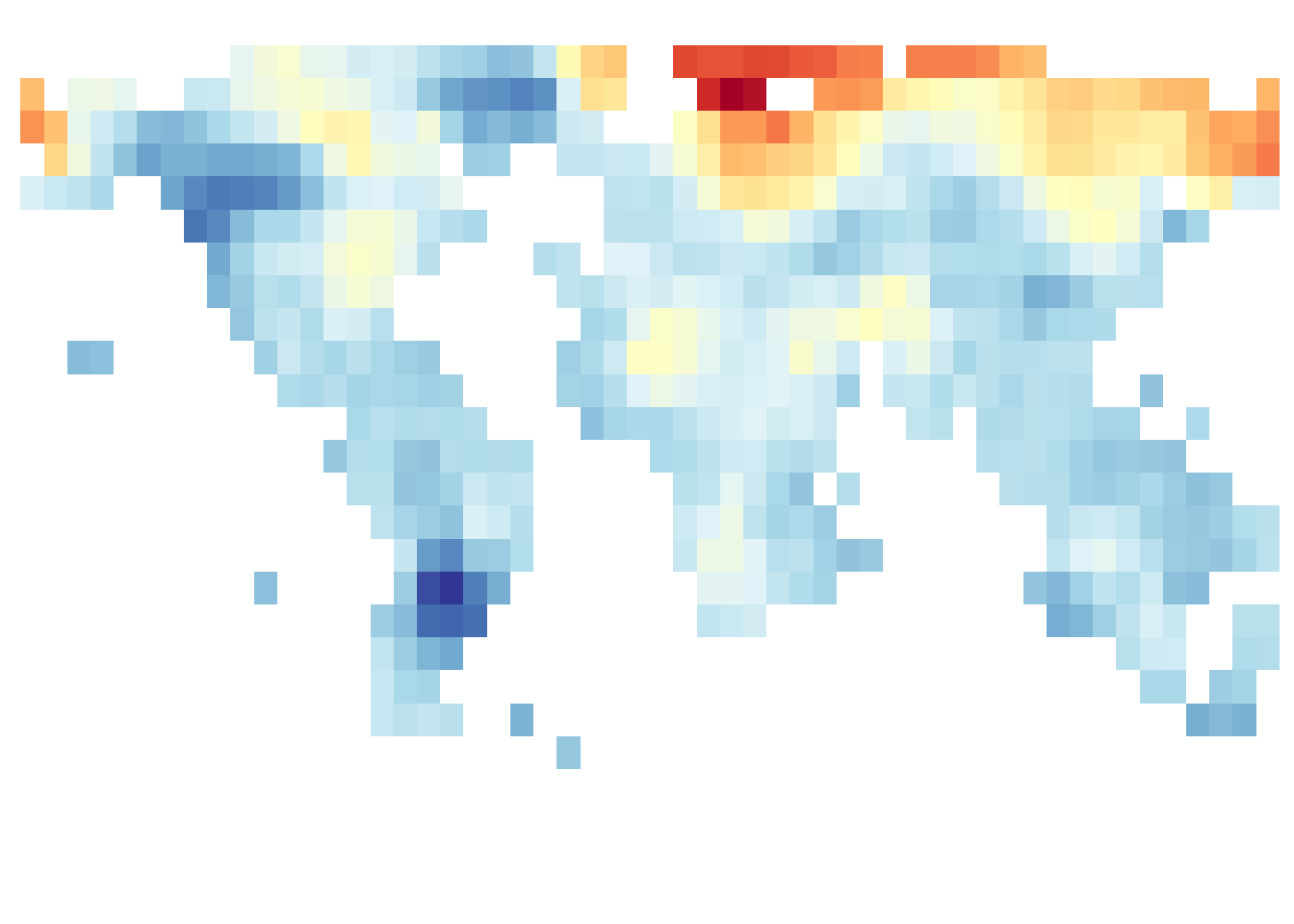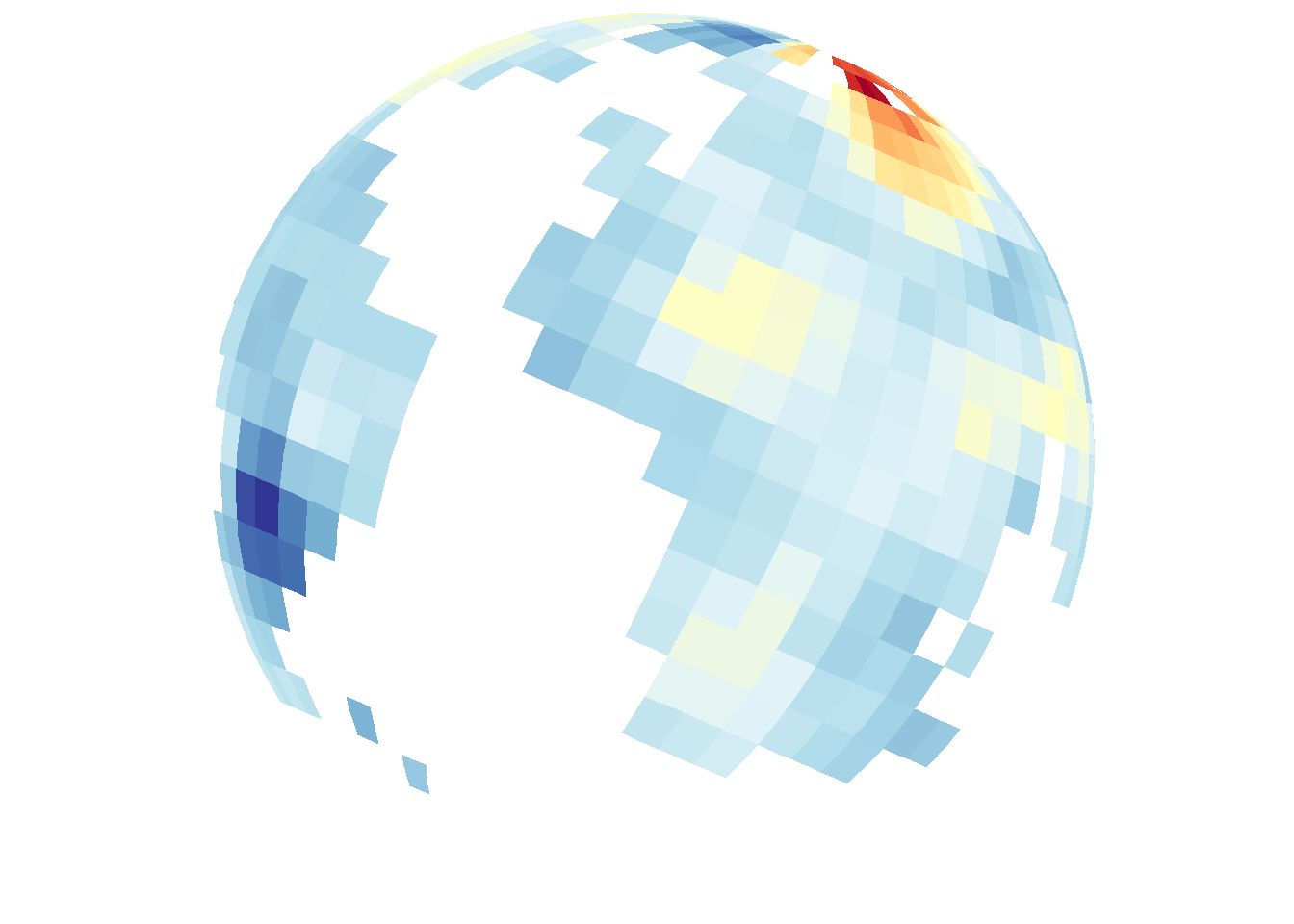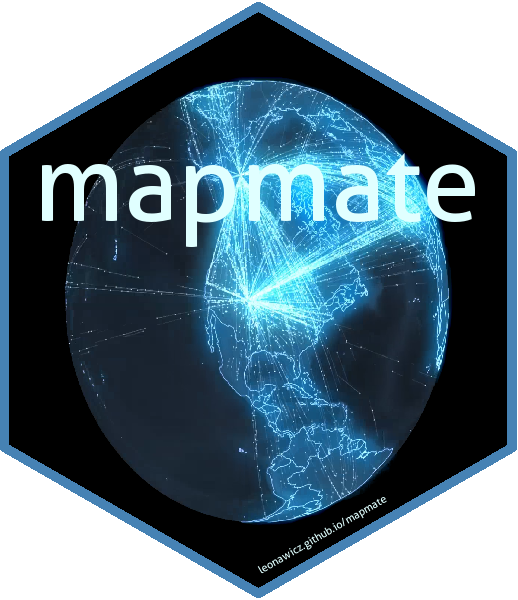mapmate (map animate) is an R package for map animation. It is used to generate and save a sequence of plots to disk as a still image sequence intended for later use in data animation production.
Installation and bug reporting
You can install snapverse from github with:
# install.packages('devtools')
devtools::install_github("leonawicz/mapmate")Please file a minimal reproducible example of any clear bug at github.
Introduction and basic example
The mapmate package is used for map- and globe-based data animation pre-production. Specifically, mapmate functions are used to generate and save to disk a series of map graphics that make up a still image sequence, which can then be used in video editing and rendering software of the user’s choice. This package does not make simple animations directly within R, which can be done with packages like animation. mapmate is more specific to maps, hence the name, and particularly suited to 3D globe plots of the Earth. Functionality and fine-grain user control of inputs and outputs are limited in the current package version.
library(mapmate)
library(dplyr)
data(annualtemps)
annualtemps
#> # A tibble: 55,080 x 4
#> lon lat Year z
#> <dbl> <dbl> <int> <dbl>
#> 1 -177. 53.7 2010 1.09
#> 2 -177. 67.0 2010 3.21
#> 3 -177. 73.7 2010 2.76
#> 4 -170 53.7 2010 0.91
#> 5 -170 60.3 2010 2.47
#> 6 -170 67.0 2010 2.73
#> 7 -163. 20.3 2010 0.19
#> 8 -163. 53.7 2010 0.79
#> 9 -163. 60.3 2010 1.43
#> 10 -163. 67.0 2010 1.28
#> # ... with 55,070 more rows
library(RColorBrewer)
pal <- rev(brewer.pal(11, "RdYlBu"))
temps <- mutate(annualtemps, frameID = Year - min(Year) + 1)
frame1 <- filter(temps, frameID == 1) # subset to first frame
id <- "frameID"
save_map(frame1, z.name = "z", id = id, ortho = FALSE, col = pal, type = "maptiles",
save.plot = FALSE, return.plot = TRUE)
save_map(frame1, z.name = "z", id = id, col = pal, type = "maptiles", save.plot = FALSE,
return.plot = TRUE)

2D flat map and 3D globe
The above is only a very basic initial example of static 2D and 3D maps. See the introduction vignette for more complete and typical usage examples:
- Generate a data frame containing monthly map data (optionally seasonal or annual aggregate average data) in the form of an n-year moving or rolling average based on an input data frame of raw monthly data.
- Generate a sequence of still frames of:
- map data for use in a flat map animation.
- dynamic/temporally changing map data projected onto a static globe (3D Earth)
- static map data projected onto rotating globe
- dynamic map data projected onto rotating globe
- Parallel processing examples using
mclapply - Convenient iterator wrapper function
- Comparison of map tiles, map lines, and polygons
- Non-map data example (time series line growth)
This and other vignettes covering more examples, including network maps with great circle arcs and generating video with ffmpeg, can be found at the mapmate website.
Other features and functionality will be added in future package versions.

